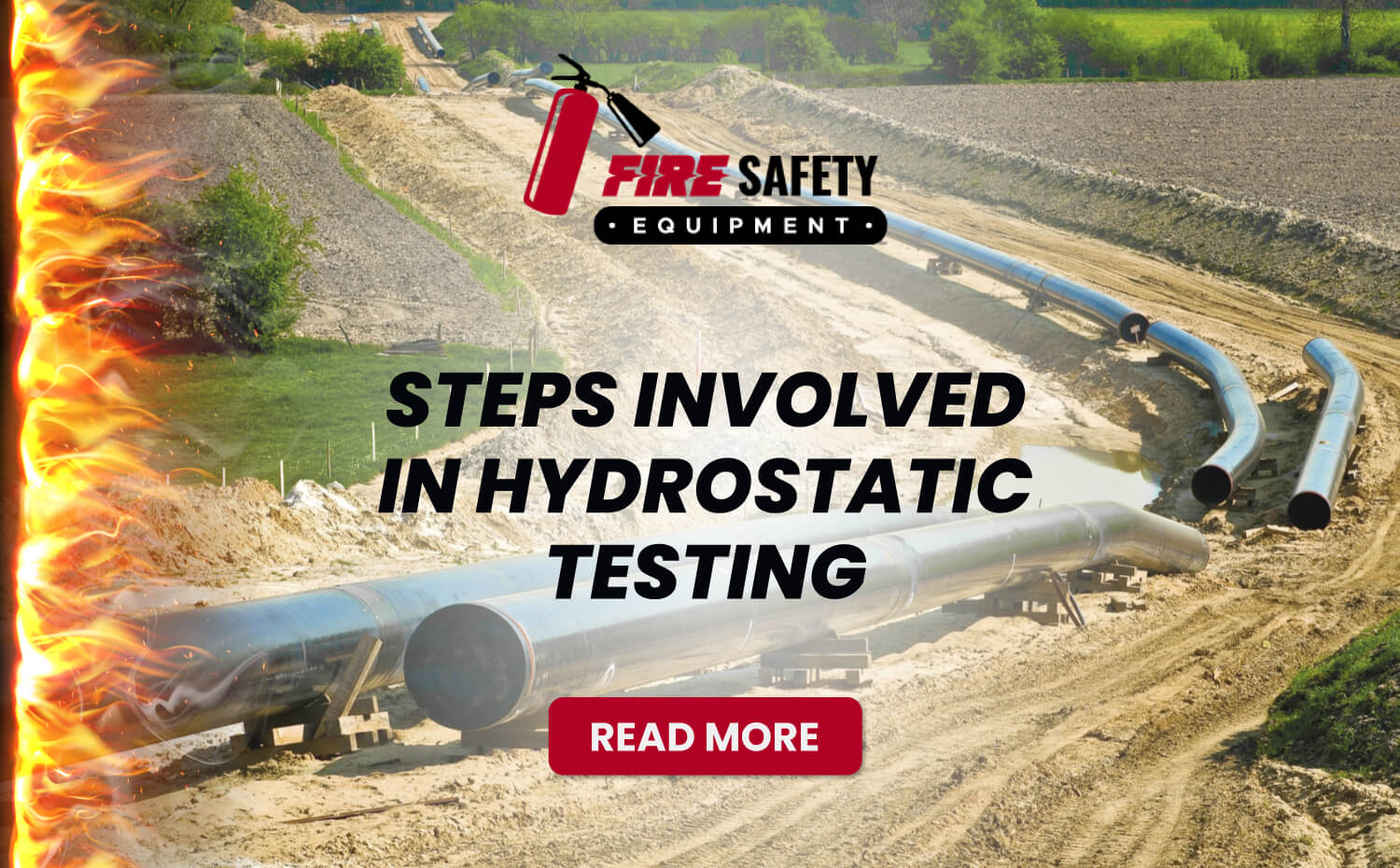Steps Involved in Hydrostatic Testing
Posted by Fire Safety Equipment on 16th May 2022
Steps Involved in Hydrostatic Testing
Testing the integrity of a product is a vital step to ensure its quality. Quality assurance tests in manufactured products come in various forms. To confirm the integrity of welds and measure both outside and inside components, you need to do a pressure and vacuum test. The most common type of pressure testing for requalifying low-pressure canisters is hydrostatic testing.
If you want to ream more, here is another post you might find interesting:
What is Hydrostatic testing?
Hydrostatic testing is a process that inspects equipment such as storage tanks, gas and fire extinguisher cylinders, and chemical pipelines through the use of a hydrostatic tester. The equipment gets tested and checked for leaks, and there is also an assessment of the structure's integrity.
Although the consensus considers it as a nondestructive testing method, there is still a chance that the equipment will rupture and fail. This failure might come from a specified test pressure exceeding its limits or a small crack that spreads rapidly. This danger is the reason why the equipment needs to shut down during the testing.
Steps To Follow
Caution: The methods mentioned in this section are only for measuring water pressure. Since compressed air poses significant safety risks, these techniques are not for air-pressure monitoring. In addition, pipelines designed for buried operation should be checked with backfill in place in most cases.
Step #1: Fill the line slowly to increase the chance of removing all the air from the conduit.
Step #2: Provide an air release at the highest location while filling the line at the lowest spot. The multiple air release areas are in place due to the contour of the line.
Step #3: Allowing all air to escape and allowing enough time for any water to absorb into the cement lining is advantageous.
Step #4: You have to connect the test pump to the lowest point of the line.
Step #5: Before the engagement with the line, prime the pump to remove all the air.
Step #6: Never connect the gauge to the pump. You have to connect it to the pipe. Connect the pressure gauge to the line at the lowest location.
Step #7: Isolate the pump from the line during the actual testing phase.
Step #8: All head pressure must include the reading on the gauge.
Step #9: Before connecting with a service line, test for bacteria and properly chlorinate the new line. You also need to isolate it for pressure testing.
Two Types of Testing Methods
These methods apply to test small pressure vessels and gas cylinders:
Step #1. The Direct Expansion Method
Pour a prescribed volume of water into a tank or a gas cylinder. The device is pressurized so that the measured volume of water gets ejected until there is no more pressure. The quantity of water pumped into the tank, the test pressure, and the amount of water pumped out are all registered and used to assess the component's reported operating state.
Step #2. The Water Jacket Method
Fill a vessel with water before inserting it into an enclosed chamber known as a test vest. The pressure gets inserted into the tank for some time inside the test vest. Water is drawn out of the vessel as it expands into a glass tube used to calculate the overall expansion. After that, the tank is depressurized and shrinks down to its original size (results can vary).
The final state of the vessel will decide if it is fit for reused or replacement.
Conclusion
A Hydrotest is a necessity to ensure the quality and integrity of the product that you are using. Any substandard quality should never reach any consumer. Due to this reason, it is a must to consult a professional who can guarantee a quality product for you. Consider reaching out to Fire Safety Equipment for your product and service needs.
